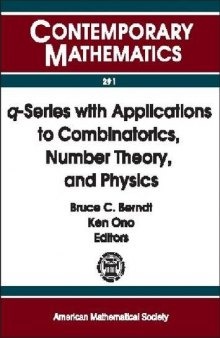 جزییات کتاب
جزییات کتاب
The subject of $q$-series can be said to begin with Euler and his pentagonal number theorem. In fact, $q$-series are sometimes called Eulerian series. Contributions were made by Gauss, Jacobi, and Cauchy, but the first attempt at a systematic development, especially from the point of view of studying series with the products in the summands, was made by E. Heine in 1847. In the latter part of the nineteenth and in the early part of the twentieth centuries, two English mathematicians, L. J. Rogers and F. H. Jackson, made fundamental contributions.In 1940, G. H. Hardy described what we now call Ramanujan's famous $_1\psi_1$ summation theorem as 'a remarkable formula with many parameters'. This is now one of the fundamental theorems of the subject. Despite humble beginnings, the subject of $q$-series has flourished in the past three decades, particularly with its applications to combinatorics, number theory, and physics. During the year 2000, the University of Illinois embraced The Millennial Year in Number Theory. One of the events that year was the conference $q$-Series with Applications to Combinatorics, Number Theory, and Physics. This event gathered mathematicians from the world over to lecture and discuss their research. This volume presents nineteen of the papers presented at the conference. The excellent lectures that are included chart pathways into the future and survey the numerous applications of $q$-series to combinatorics, number theory, and physics



 دانلود کتاب
دانلود کتاب

 جزییات کتاب
جزییات کتاب





 این کتاب رو مطالعه کردید؟ نظر شما چیست؟
این کتاب رو مطالعه کردید؟ نظر شما چیست؟
